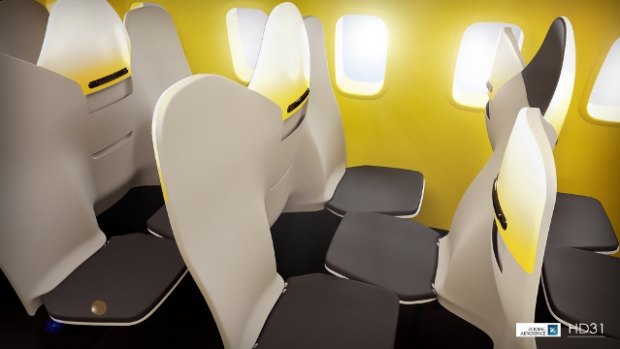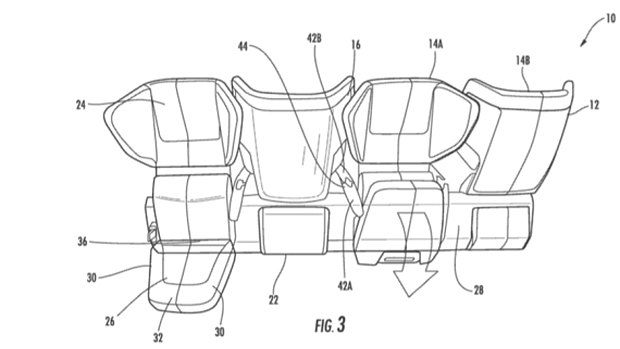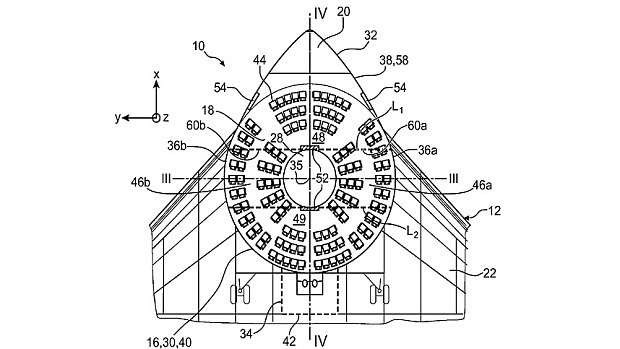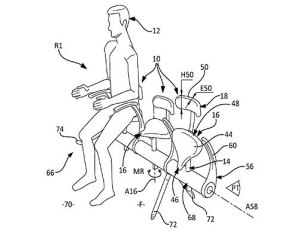This was published 8 years ago
'Economy class cabin hexagon': New plane seating arrangement in economy class could force passengers to make eye contact
By Soo Kim

Every other passenger in a row will face backward in a new patent design for planes. Credit: Zodiac Aerospace
A new in-flight seating plan aims to make better use of cabin space - but would see passengers forced to face one another during a flight.
The designs, proposed by Zodiac Seats France, the airline industry supplier, feature alternating forward and backward facing seats placed side by side. They were revealed last month following a patent application filed to the World Intellectual Property Organization in December.
While a lack of legroom is generally the biggest bugbear for air travellers, the aim of this unconventional design is to "increase the space available at the shoulder and arm area". It will also create room for more seats on the plane, Zodiac says, a feature which will no doubt appeal to airlines.

Televisions and tray tables would remain on the backs of the seats under the new design.Credit: Zodiac
The new configuration may eliminate in-flight elbow wars, as fliers battle for possession of the armrests, but it would also give passengers less privacy while eating or attempting to sleep.
The seats would be built with televisions and foldable tray tables in the back, and the design would still comply with industry standards for aisle space.
It is the latest in a series of unusual seating plans proposed recently in a bid to increase cabin capacity and enhance the flying experience.

Airbus's 'flying doughnut' aircraft design.Credit: Airbus
Last summer, Airbus proposed a futuristic aircraft design featuring a doughnut-shaped circular cabin with curved aisles, where economy class passengers would be seated at the outer ring while business class fliers sit in the inner ring. The new configuration aimed to be a more "simple, economic and efficient solution" to standard cylindrical aircraft which require heavy "sealed bottoms" at both ends to regulate cabin pressure, according to the patent.
Airbus has also proposed a saddle-like plane seat with smaller armrests and no headrests or cushions, aimed at creating a more streamlined, lighter aircraft with room for more people.
"In all cases, this increase in the number of seats is achieved to the detriment of the comfort of the passengers," the patent read. "However, this remains tolerable for the passengers in as much as the flight lasts only one or a few hours."

Airbus's bicycle saddle-like seat design.Credit: Airbus
Last April, the leading manufacturer proposed a new 11-abreast seating configuration on board its A380 planes which would give airlines the option of an extra 35 to 40 seats in economy class on board its biggest model without sacrificing space in premium sections. But passengers are less likely to approve, as seating 11 abreast would mean those in the middle seat having to contend with being boxed in by two passengers on either side.
Earlier this year, Spring Airlines, the Chinese budget carrier, made a new bid for the airline to be able to offer cut-price tickets to passengers willing to stand. Similar schemes have been proposed by other low-cost carriers – notably Ryanair – but aviation authorities have been reticent to approve them due to safety concerns.
The Telegraph, London
Sign up for the Traveller newsletter
The latest travel news, tips and inspiration delivered to your inbox. Sign up now.